Back in the 80s, Art Spiegelman’s art comics magazine, RAW, published a few intriguing short stories by an Italian cartoonist named Lorenzo Mattotti. I remember thinking that they looked great, but they didn’t make a huge impression on me at the time. The stories seemed too slight to grab me. The comics in RAW that were the most memorable to me were either radical in content or form (or both), and Mattotti’s didn’t rise to that level in my mind.
Mattotti made his name with a book called Fires in 1986. Fires appeared in English a couple of years later and it would have definitely been the Mattotti book I would have included on this list, but I think I lost my copy in a move. My personal library is as subject to the vicissitudes of fate as much as any other aspect of my life. Instead of Fires, today I will discuss Chimera, a 30-page dream comic from 1999.
One thing that stands out about Chimera is that it is drawn in pen and ink. Mattotti is famous for being a colorist. His color comics and illustration appears to be produced with gouache, and there is a pleasingly hand-made look to his artwork. I don’t want readers to be unaware of this important aspect of Mattotti’s art, so here is a sample of his color work.
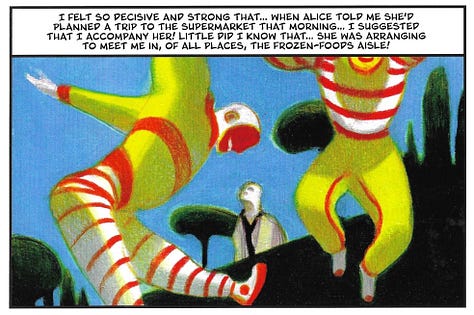
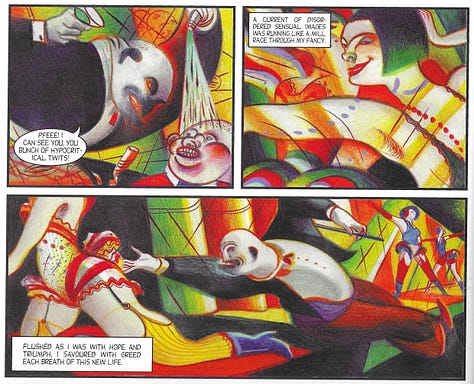
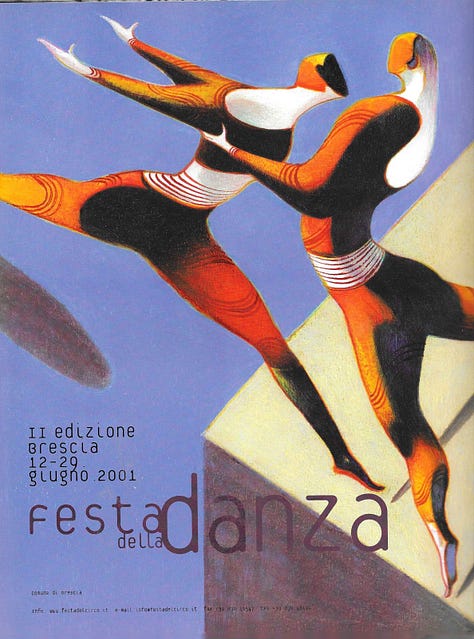



The first two images here are from comics, but the rest are commercial commissions. My impression is that you can hardly host a cultural event in Italy without Mattotti producing an elegant poster for it. Back in 2005, I went to the Offshore Technology Conference and was surprised when I picked up a copy of Eni’s annual report—covered with colorful Mattotti illustrations. By then, this underground cartoonist had become mainstream enough to be hired by one of the world’s largest oil companies.
But enough eye-candy. Chimera has just one narration balloon at the very beginning of the story. It is otherwise a mute comic employing a series of wordless images. The narration is in first person. He tells us that a “thinker” had once paused under a particular tree and discovered a “secret”. (Sort of a Bodhi tree.) Since that time, people visit that tree to try to learn the thinker’s secret, but leave disappointed. The narrator visits, lays down under the tree, and falls asleep. I read the rest of Chimera as a series of dream fragments experienced by the narrator.
At first, Mattotti’s lines are flowing and delicate. His work here resembles cursive calligraphy. It is joyful. The tone of the work is not based on what is being depicted but in how it is being depicted. This is a case of dream logic, where your state of mind ends up determining what you choose to dream about. So the subject matter evolves to match the tone, jumping to a sex dream.
But this changes the tone of the dream. There is more ink in the page. We start to see some shadows appearing. Like in a dream, the subject changes abruptly—the dreamer is now a baby in a playpen, and a lizard is climbing in to join him.
Dad reaches in, presumably to remove the lizard, but appears somewhat shadowy and menacing. The dad eats the lizard, and the baby throws something (a block?) at him, enraging him. At this point Mattotti has given up on the swirling, dancelike lines he used at the beginning and now the pages are covered with slabs of light and dark.
When I have a dream that makes such dramatic leaps in tone, my mind tries to create a story that fits. But the dream depicted in Chimera cannot be forced into a narrative—it is too chaotic. Instead of a plot, a series of events that follow each other in time, we have a sequence of moods—lust is followed by anger which is followed by. . . bunnies?
Now the dream has turned dark and chaotic. The inclusion of the rabbits is inexplicable, but it does seem like we have reached the “fear” portion of our dream. Perhaps the dreamer had a bad experience with rabbits in his past, so when it comes time for his dream to show him fear, it pulls “rabbits” out of his fear database.
Chimera gets darker over the course of its 30 pages. By the end, the dreamer is in a dense forest, dark and spooky.
When I saw this page, it made me think of the song “Erlkönig” by Schubert (set to a poem by Goethe). In it, a boy and his father are riding through the woods, pursued by the supernatural Erlking. The lurking sense of dread hits me the same in the song and in the comic.
As far as I can tell, Chimera is out of print in English. It looks like you will have to pay a collector’s premium if you want to acquire a copy.
[Please consider supporting this publication by becoming a patron, and you can also support it by patronizing our online store. And one more way to support this work is to buy books through The Great God Pan is Dead’s bookstore. ]

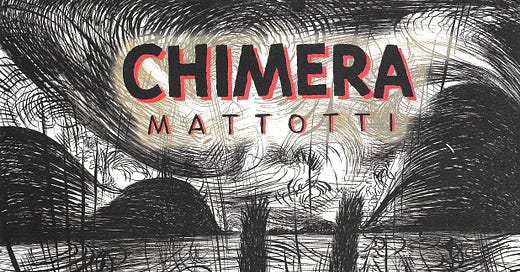




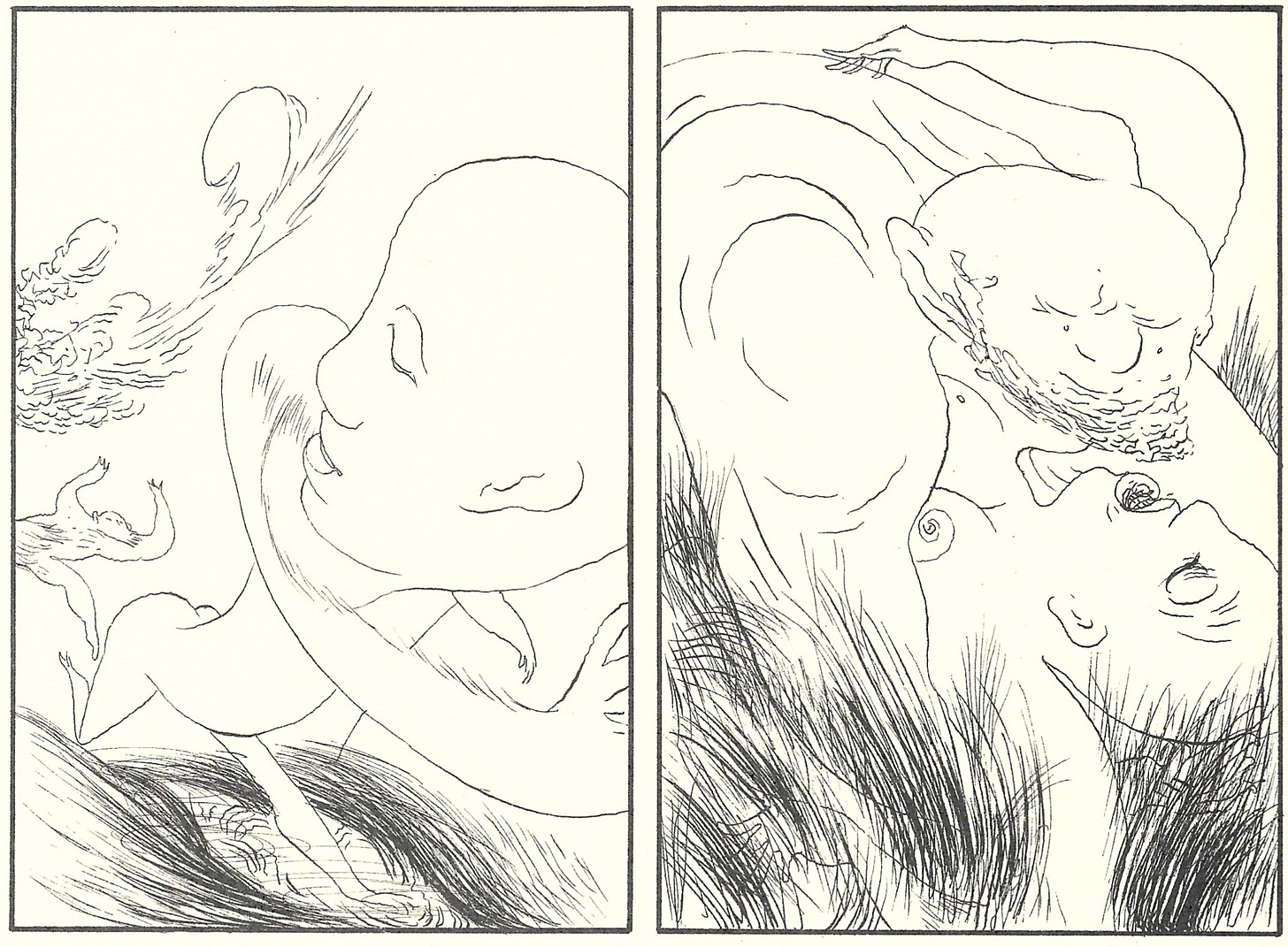
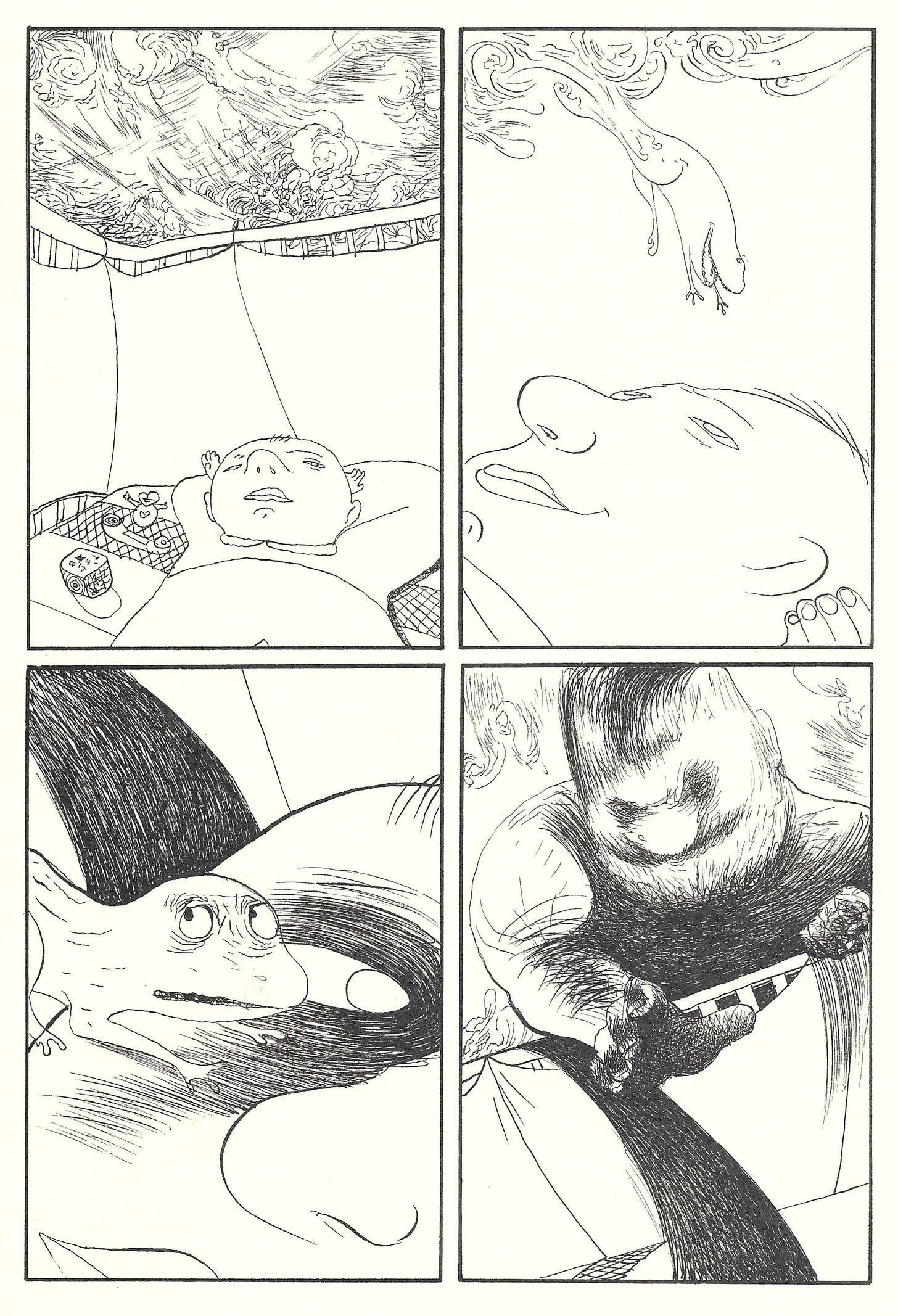

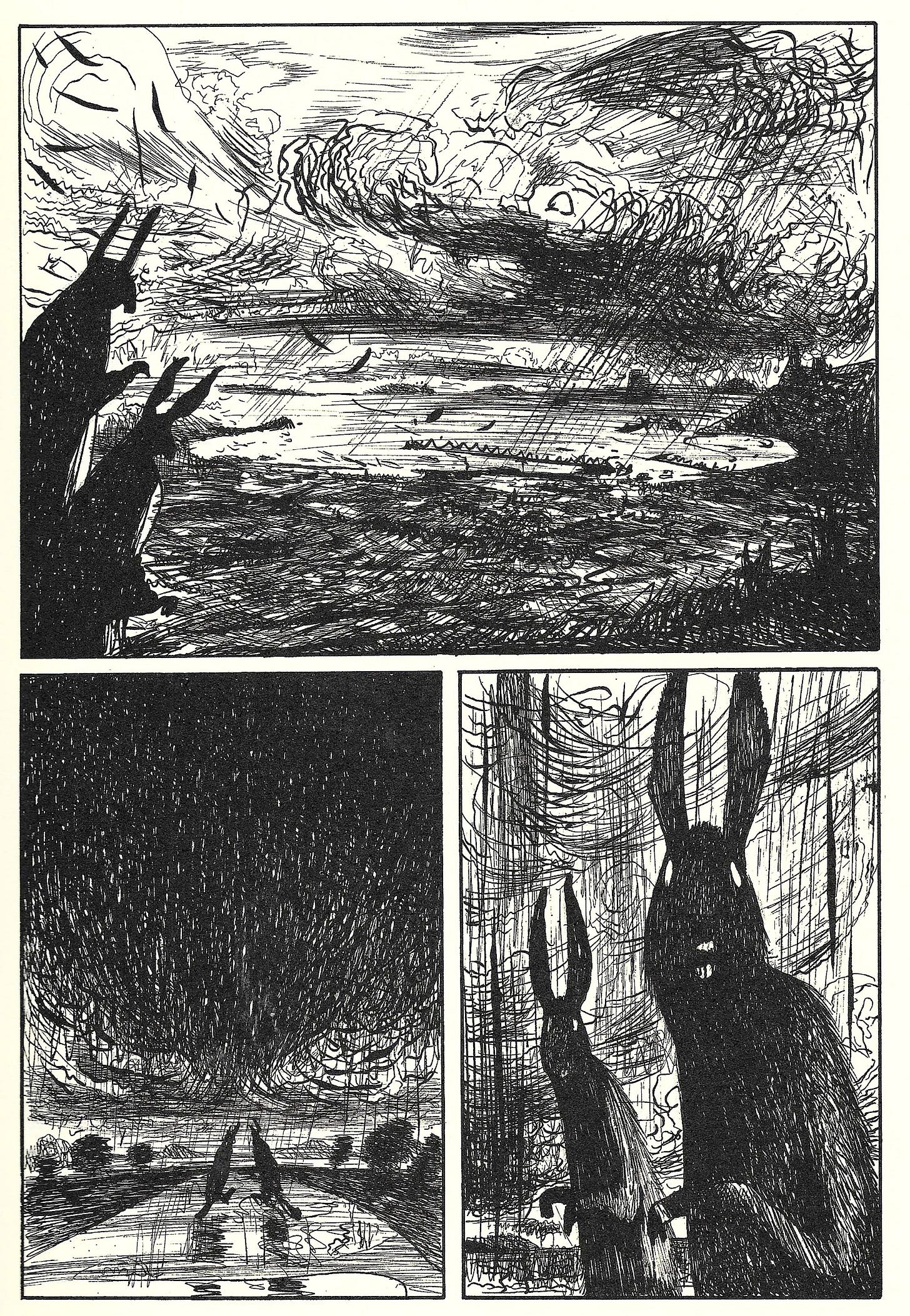
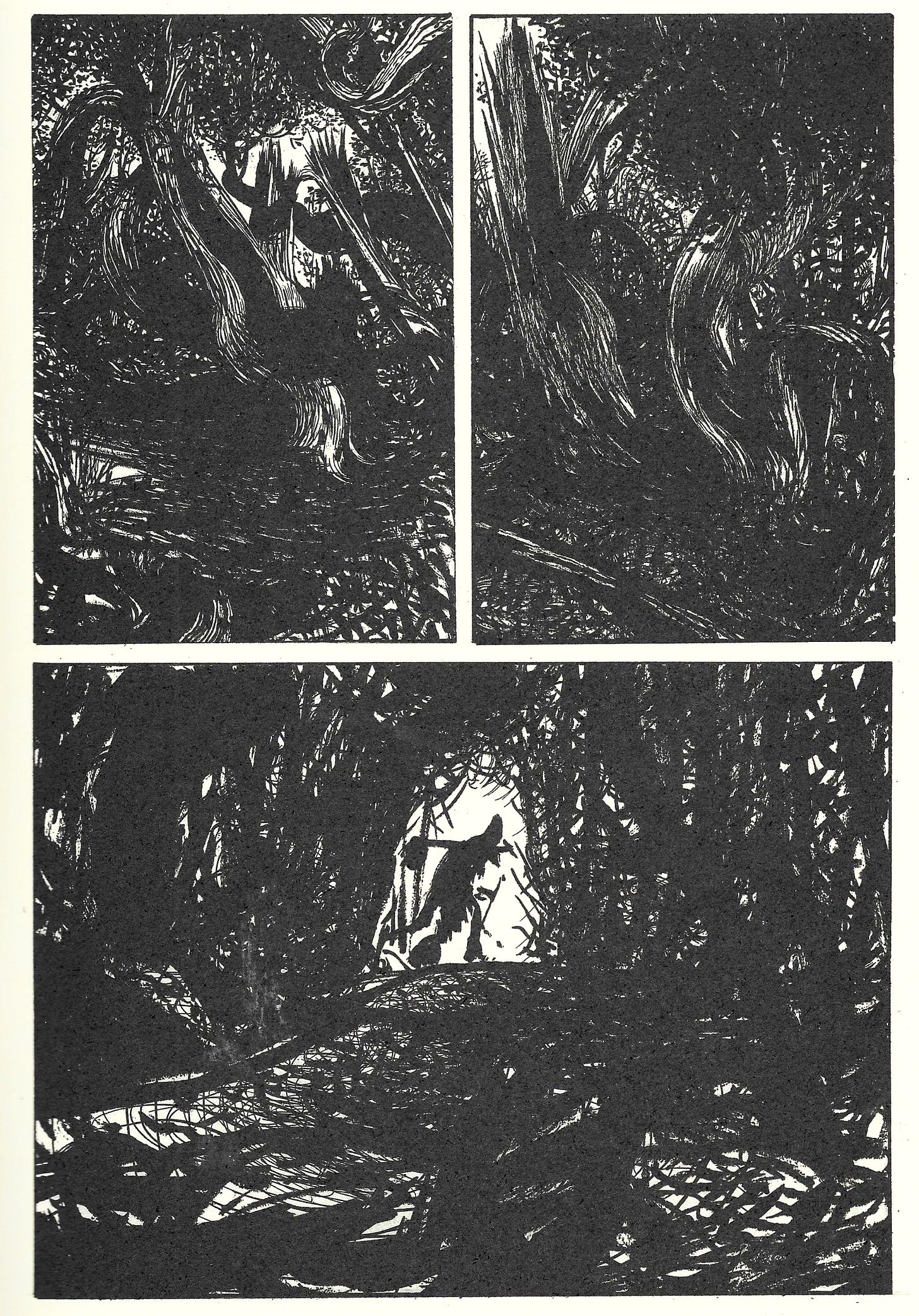
Love Mattoti with the same burning devotion I had when I fell for him at first sight ("Fires"). Tremendous grace in his compositions and narrative flow, and just always superb drawing. A "new" cartoonist reminds me a lot of him, Bhanu Pratap @bhanupratap.bsky.social. Similar graceful and fleet drawing from a different cultural angle. Indian, but packing plenty of Western and Manga genre baggage. Check him out.
Oh, also, Mattoti illustrates one of the adaptations (Ghosts) of Paul Auster's New York Trilogy that Paul Karasik wrote. It's supposed to come out in April. It also contains a reprint of City of Glass (Mazzucchelli illustrated) and the Locked Room (Karasik illustrated).